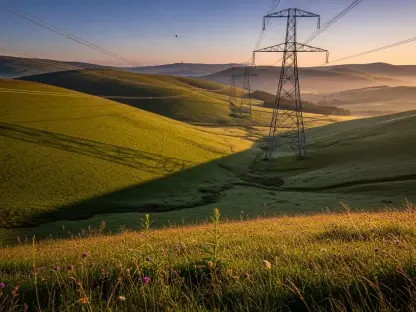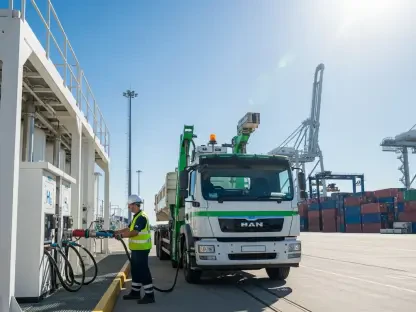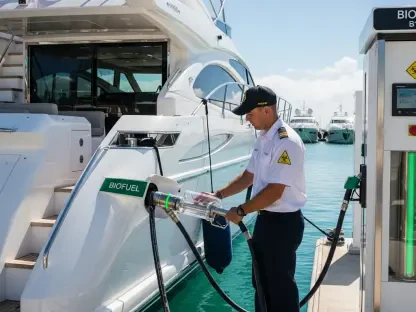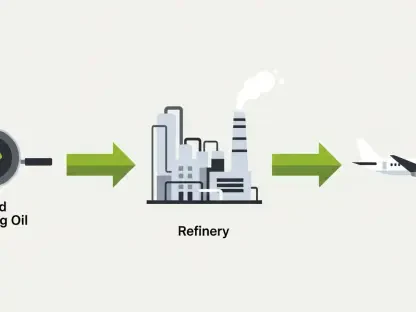What happens when a party’s core values collide with the economic needs of its constituents? In a dramatic standoff on Capitol Hill, two Republican senators are blocking President Donald Trump’s Treasury Department nominees over a fierce dispute about renewable energy tax credits, creating a high-stakes battle that could reshape the landscape of clean energy in America while pitting local interests against national fiscal priorities.
The significance of this conflict cannot be overstated. With renewable energy industries driving jobs and growth in key states, the debate over tax credits for wind and solar projects touches on broader questions of energy independence and government spending. As the Treasury Department faces a critical deadline to redefine eligibility rules, the outcome of this clash could determine the viability of countless green projects nationwide. This story reveals a deep rift within the Republican Party, where loyalty to constituents challenges ideological commitments.
A Party Divided: Renewable Energy Versus Fiscal Discipline
In the heart of the Republican Party, a schism is emerging over the future of energy policy. Senators Chuck Grassley of Iowa and John Curtis of Utah have taken a bold stand by placing holds on three Treasury nominees—Brian Morrissey, Francis Brooke, and Jonathan McKernan. Their objection stems from a White House directive to restrict tax credits that have long supported wind and solar initiatives, a move that threatens the economic fabric of their states.
This internal discord highlights a fundamental tension between supporting renewable energy—a sector that employs thousands and fosters innovation—and adhering to a conservative push for reduced federal spending. While some party members champion budget cuts, others see these credits as indispensable for maintaining competitiveness in a rapidly evolving energy market. The clash is not merely political; it’s a reflection of competing visions for America’s economic and environmental trajectory.
The Core Issue: Why Energy Credits Spark Such Fierce Debate
At the center of this controversy lies a specific policy: the “safe harbor” provision, which allows renewable energy projects to qualify for tax credits by investing just 5% of total costs to begin construction. President Trump’s recent order to raise this threshold could exclude smaller developers, stifling growth in an industry that, according to the U.S. Energy Information Administration, accounted for 21% of electricity generation in 2024. States like Iowa, a leader in wind energy, stand to lose significant economic momentum if these changes take effect.
Beyond the numbers, the debate carries profound implications for energy independence. Renewable tax credits have been instrumental in reducing reliance on fossil fuels, a goal shared across party lines. Yet, the push to tighten eligibility rules is seen by some as a necessary step toward fiscal restraint, raising questions about how to balance environmental progress with budgetary concerns in a polarized political climate.
The resistance from Grassley and Curtis underscores the personal stakes involved. For their constituents, these credits are not abstract policy points but lifelines that sustain livelihoods. As the Treasury Department races against an August 18 deadline to issue new regulations, the urgency to resolve this issue has never been greater, with ripple effects poised to impact national energy strategies.
Unpacking the Standoff: Nominee Delays and Policy Disputes
Delving into the mechanics of this deadlock reveals a calculated strategy by the dissenting senators. By placing holds on the Treasury nominees, Grassley and Curtis are leveraging Senate rules to demand reconsideration of the proposed changes to the “safe harbor” rule. Their actions aim to protect an established system that has guided renewable projects for over a decade, ensuring predictability for investors and developers.
Further complicating matters is the legislative backdrop. The recently passed One Big Beautiful Bill Act accelerates the phase-out of clean energy subsidies, mandating that projects begin construction within a year or be operational by the end of 2027 to qualify for credits. This compressed timeline adds pressure on the Treasury to finalize its guidance, amplifying the significance of the senators’ procedural blockade as a tool to influence policy outcomes.
This conflict exposes a broader ideological rift within Republican ranks. On one side, there’s a drive to uphold fiscal conservatism by curbing subsidies; on the other, a recognition of renewable energy’s role in economic vitality. The resolution of this impasse could set a precedent for how the party navigates similar tensions between local needs and national priorities in the years ahead.
Voices of Resistance: Senators Champion Local Interests
Senator Chuck Grassley, a seasoned advocate for Iowa’s wind energy sector, has been unequivocal in his defense of existing tax credit rules. He argues that the definition of “begin construction” is rooted in long-standing Treasury guidance and congressional intent, providing a stable framework for businesses. His stance reflects a deep concern that abrupt policy shifts could erode trust and hinder investment in a state where wind power generates over 60% of electricity, per recent state reports.
Echoing this sentiment, Senator John Curtis of Utah emphasizes the impact on solar initiatives critical to his region’s economy. Industry leaders in Utah have warned that stricter credit requirements could derail projects, leading to job losses and stalled innovation. One solar developer noted that a single delayed project could affect hundreds of workers, illustrating the tangible consequences of this policy debate.
These voices of dissent are not merely oppositional; they represent a rare willingness to challenge party leadership on behalf of constituents. Their defiance sheds light on the human dimension of energy policy, where decisions made in Washington reverberate through small towns and rural communities, shaping the daily lives of countless Americans.
Finding a Path Forward: Solutions to Break the Deadlock
As this standoff persists, the need for resolution becomes increasingly urgent. One potential avenue is fostering direct dialogue between the White House, Treasury officials, and the dissenting senators to negotiate a compromise on the “safe harbor” provision. A balanced approach could preserve fiscal goals while ensuring that renewable projects remain viable, safeguarding both economic and environmental interests.
Another critical step involves establishing clear, consistent Treasury guidelines by the looming August 18 deadline. Transparency in rulemaking would provide businesses with the certainty needed to plan effectively, mitigating the risk of sudden policy disruptions. Engaging renewable energy companies and local stakeholders in this process could further ensure that decisions are grounded in real-world impacts rather than abstract ideology.
Ultimately, addressing this crisis demands a collaborative spirit that transcends partisan divides. By prioritizing data-driven solutions and open communication, policymakers can chart a course that reconciles competing priorities, ensuring that the path toward energy innovation does not come at the expense of economic stability or fiscal responsibility.
Reflecting on the Battle: Lessons and Next Steps
Looking back, the clash between Republican senators and the Trump administration over energy credits revealed a profound struggle within the party to define its stance on renewable energy. The holds on Treasury nominees by Senators Grassley and Curtis underscored the power of individual lawmakers to influence national policy when local interests were at stake. This episode served as a stark reminder of the intricate balance between economic growth and ideological purity.
Moving forward, stakeholders need to focus on building consensus through structured negotiations, ensuring that future policy changes account for diverse regional needs. Establishing a permanent forum for dialogue between energy producers, legislators, and federal agencies could prevent similar conflicts, fostering a more inclusive approach to decision-making. Additionally, investing in studies to quantify the long-term benefits of renewable incentives might provide the empirical foundation needed for informed compromises.
The resolution of this dispute also calls for a renewed commitment to adaptability in governance. Policymakers must remain open to revisiting and refining energy policies as technological and economic landscapes evolve. By embracing flexibility and prioritizing collaboration, the lessons from this standoff could guide the nation toward a more sustainable and equitable energy future.









